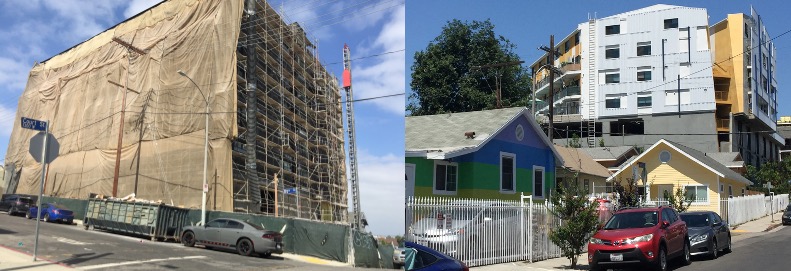CommentsLA REPAIR ZONES - “Los Angeles has some of the lowest income and highest need areas in the country resulting from years of structural and institutional racism.
These inequities were further made apparent as the COVID-19 pandemic disproportionately impacted our low-income communities of color,” Council File 21-1187, 10/14/21, L.A. REPAIR Innovation Fund, Page 1.
Note: Low income does not mean exclusion from paying sales taxes including License/Permit Fees and Fines that go to the General Fund.
The City Council and the Mayor’s adopted Budget for fiscal year 2021-22 provided $10 Million from the Un-appropriated Balance for the L.A. REPAIR Innovation Fund for communities to participate in the Participatory Budget pilot program including the program’s administrative costs. “These funds were provided on a one-time basis, and future funding for the program would be subject to the City’s annual budget process. There is no additional General Fund impact,” CF 21-1187, 11/03/21.
This participatory budgeting pilot program would be the City’s first time attempt, designed to empower nine (9) communities in the REPAIR Zones.
An example of one of the proposed REPAIR Zones is the neighborhood of Westlake. A quick drive through the area reveals the habitual neglect of the City Departments and elected officials. The need of care for the neighborhood becomes strikingly obvious by the amount of trash piled and scattered on the streets, the absence of public transit amenities, and the un-kept parkway along Alvarado Street its main corridor at Mac Arthur Park.
Another area of Westlake in need of environmental oversight is the LA Oil Field. This area of the City has a high concentration of subterranean idle oil wells of which their underground connections extend beyond the parcel lots and into the streets: See map of oil wells, Court and Bixel Streets. In addition, over sized Transit Oriented Communities (TOCs), meant for commercial corridors, have been built in close proximity to subterranean idle oil wells in this residential community of 1920 California bungalows. Oil spills have occurred during initial excavation stages of TOC constructions, putting the nearby residents at potential heath risk while the steady smell of crude pervade the hills. Since the COVID-19 pandemic, the number of residents of this area affected, exceeded the average numbers of those in other communities per the statistics revealed by Council District 1, Field Deputy, Ricardo Flores at an Echo Park neighborhood council meeting.

Left photo of TOC building on Court Street at Toluca, followed by TOC on Court Street at Bixel Street.
Participatory Budgeting is a “direct way to enable traditionally excluded groups to decide on investment priorities in their communities –helping to overcome explicit or implicit systemic biases that may have prevented community priorities from being addressed.” The participation of these communities in the allocation of public resources begins the process of reparation by shifting power away from a historically unrepresentative institution into the hands of the historically disempowered residents,” Council File: 21-1187, 10/14/21, Page 4.
“The intent of this process is to direct funding to the most impactful services based on what the community reimagines for post-pandemic priorities.”
The majority of funding will be for direct program grants and a portion of it will be used for administrative costs. The proposed fund distribution across zones will total an investment amount of $8.509,500 out of $10M. Every zone receives $775K for the first 150,000 people and a prorated amount for the number of people above that quota, CF: 21-1187, 11/03/21 LA REPAIR Innovation Fund.
Six (6) zones are proposed to receive $775K based on the program’s population criteria. The zones include the following neighborhoods:
(1) Skid-Row in Council District (CD) 14; population 7,500.
(2) Mission Hills-Panorama City-North Hills areas in CDs 6, 7, & 12; population 148,770.
(3) Arleta-Pacoima areas in CDs 6 and 7; Population: 105,065
(4) Boyle Heights in CD14; Population: 89,477
(5) Westlake areas in CD1 & 13; Population: 118,392
(6) Wilmington and Harbor Gateway/City in CD15; Population 123,584
The remaining three (3) LA REPAIR Zones with populations beyond the set number of people are awarded grants accordingly: For example,
(7) West Adams-Baldwin Hills-Leimert areas in CDs 5 &10; Population 169,979; Proposed grant $874K.
(8) South Los Angeles areas in CDs 1, 8, 9, & 10; Population 291,343; Proposed grant $1.45M.
(9) Southeast Los Angeles areas in CDs 8, 9, 14, & 15; Population 300,143; Proposed grant $1.54M.
Lastly, LA REPAIR is hosting an upcoming information session via Zoom with the Participatory Budgeting Project, “our partner in this work, to go into the details of this opportunity and what to expect with the application and selection process. To RSVP, click the following link to register: Wednesday, July 13 from 11:00-11:45 AM. The application for the Community Engagement Partnership is open now, and has been extended to July 24,” announced Allison Wilhite, L.A. REPAIR Participatory Budgeting Coordinator in an email.
(Connie Acosta is a participating member of the Los Angeles Neighborhood Council System and a contributor to CityWatchLA.)






